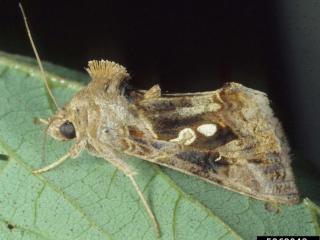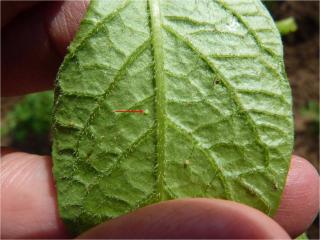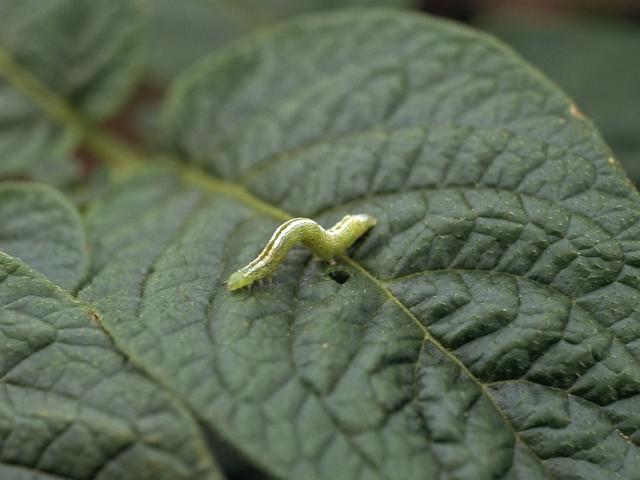Identification
Looper’s Indonesian name is "ulat jengkal" and the scientific name is Chrysodeixis sp.
Looper moths have a wingspan of about 50mm. The upper wings are brown with silver marks, while lower wings are pale brown.
Eggs are about 0.5mm diameter and white when first laid. They darken just before hatching.
Eggs hatch into a larval stage which feeds on leaves. Larvae are lime green and often have wite stripes running the length of their body. All stages of larvae move with a characteristic looping action.
Larvae feed continuously and as they grow, leaf loss can be rapid. Large numbers can defoliate crops.
When larvae are mature, they web leaves together or roll single leaves to form a silk chamber in which they form a cocoon. The adult moth later emerges from this silk chamber.
Management
Looper larvae will not be a pest in all crops. Monitor crops weekly to check for larvae or characteristic damage on leaves.
When an estimated 20 to 25% of the leaf canopy has been removed by looper larvae, apply insecticide.
Because loopers eat a lot of leaf, the stomach poison bacteria BT (Bacillus thuringiensis) is an effective biological insecticide. BT is safe for humans and only kills leaf feeding moth larvae. Therefore natural enemies of loopers and other pests will not be killed by it.
Looper larvae are attacked by a range of natural enemies – diseases, predators and parasites.
Acknowledgment
Funding for this work to support Indonesian potato farmers and WA seed potato exports was provided by ACIAR (the Australian Centre for International Agricultural Research) and the Department of Primary Industries and Regional Development, Western Australia.





